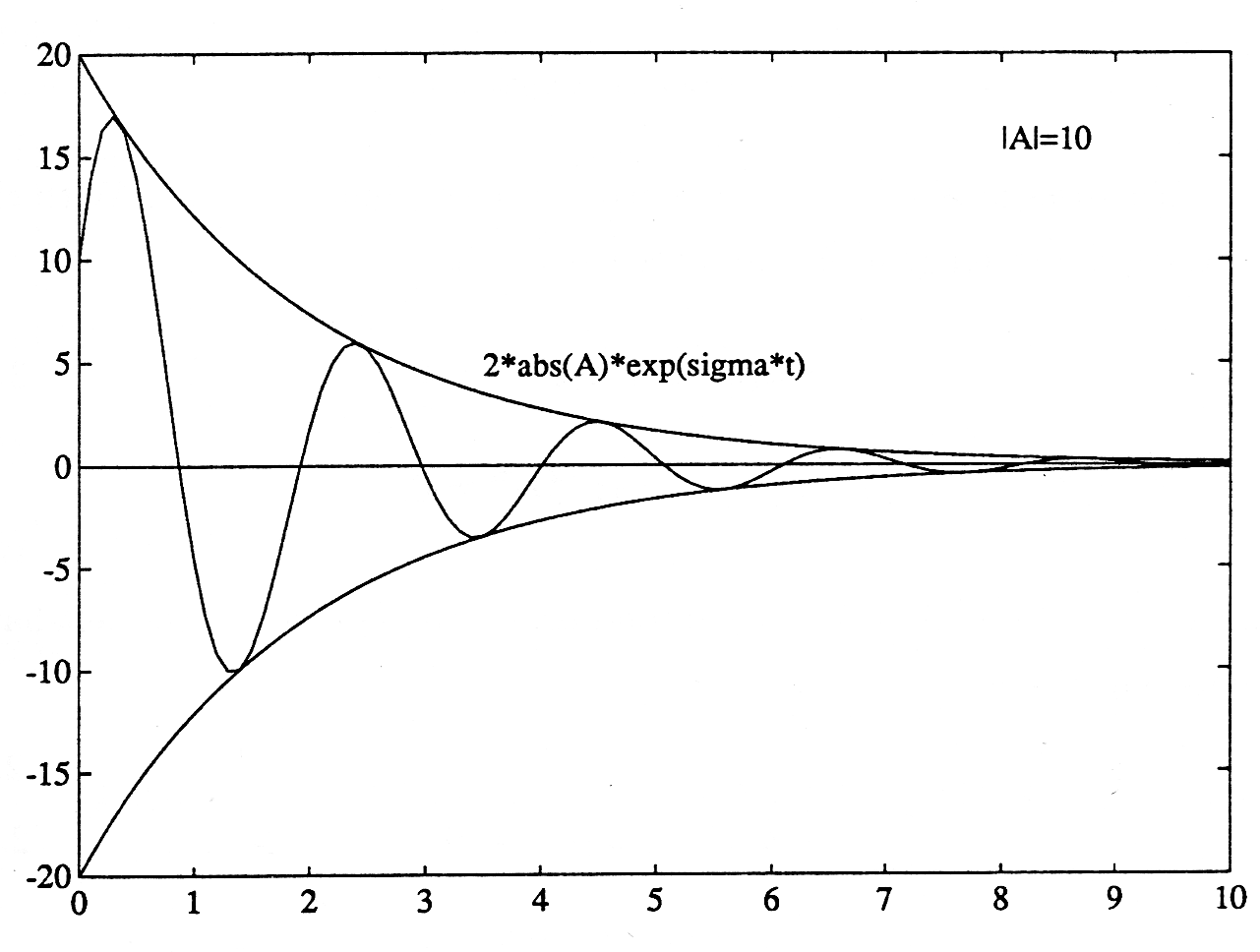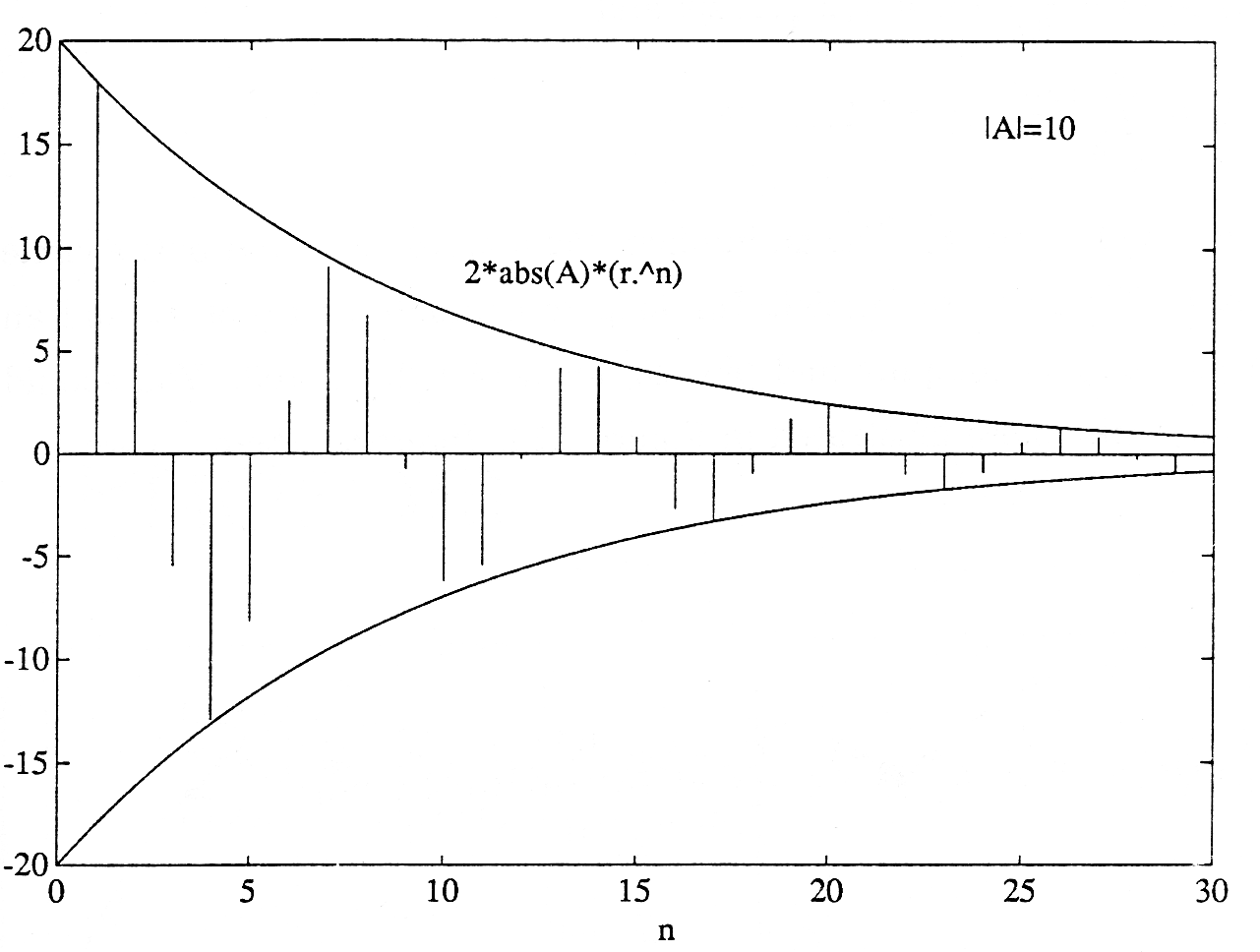| << Chapter < Page | Chapter >> Page > |
With our understanding of the functions , , and the quadratic equation , we can undertake a rudimentary study of differential and difference equations.
Differential Equations. In your study of circuits and systems you will encounter the homogeneous differential equation
Because the function reproduces itself under differentiation, it is plausible to assume that is a solution to the differential equation. Let's try it:
If this equation is to be satisfied for all , then the polynomial in must be zero. Therefore we require
As we know from our study of this quadratic equation, the solutions are
This means that our assumed solution works, provided or . It is a fundamental result from the theory of differential equations that the most general solution for is a linear combination of these assumed solutions:
If is less than zero, then the roots and are complex:
Let's rewrite this solution as
where σ and ω are the constants
With this notation, the solution for is
If this solution is to be real, then the two terms on the right-hand side must be complex conjugates. This means that and the solution for is
The constant may be written as . Then the solution for is
This “damped cosinusoidal solution” is illustrated in [link] .

Difference Equations. In your study of digital filters you will encounter homogeneous difference equations of the form
What this means is that the sequence obeys a homogeneous recursion :
A plausible guess at a solution is the geometric sequence . With this guess, the difference equation produces the result
If this guess is to work, then the second-order polynomial on the left-hand side must equal zero:
The solutions are
The general solution to the difference equation is a linear combination of the assumed solutions:
This general solution is illustrated in [link] .


Notification Switch
Would you like to follow the 'A first course in electrical and computer engineering' conversation and receive update notifications?